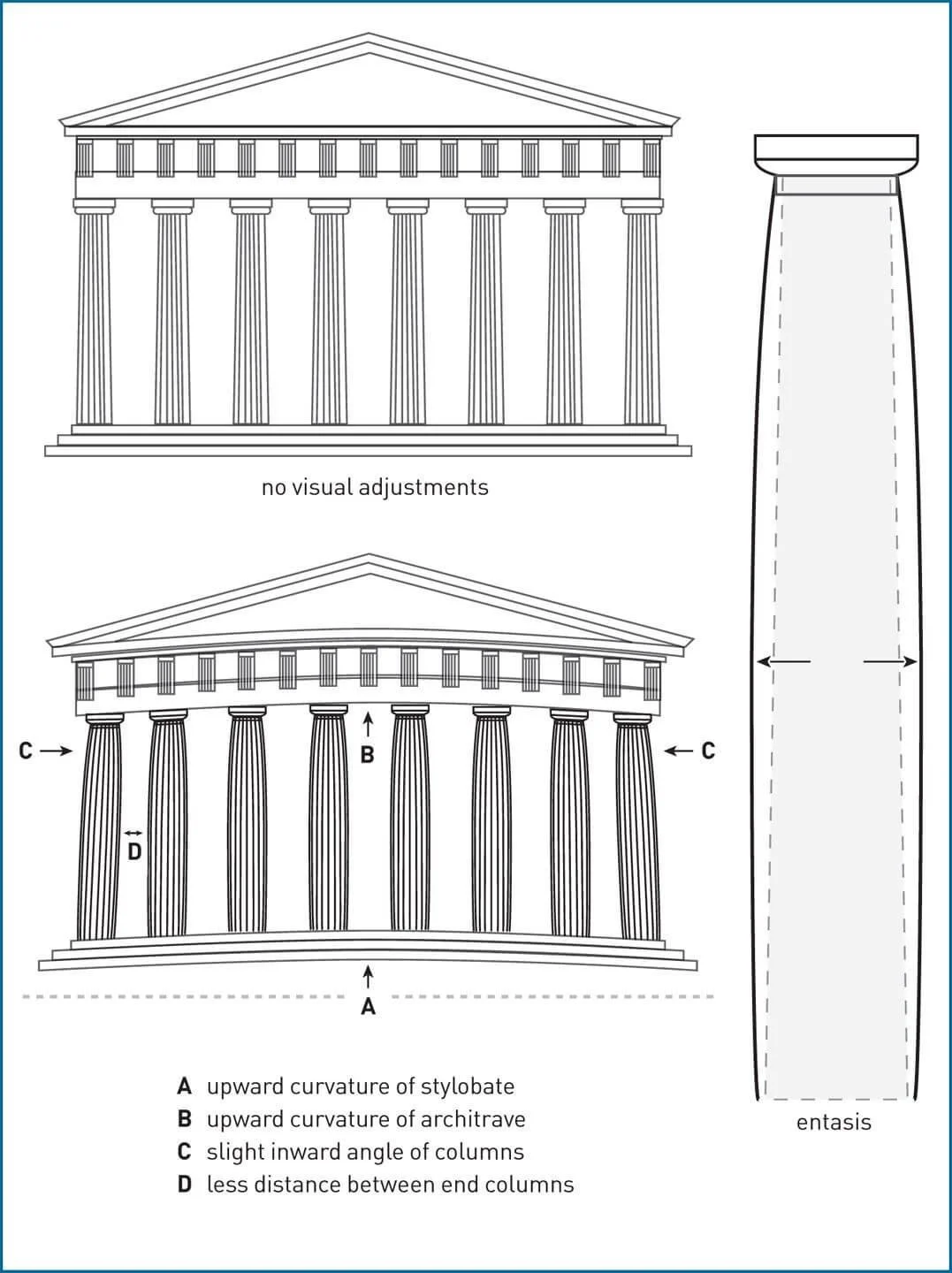The Parthenon, one of the most revered monuments of ancient Greek architecture, stands as a testament to the ingenuity and precision of its creators. While its grandeur and proportionality seem effortlessly perfect to the human eye, this perception is not solely the result of accurate measurements but rather a series of calculated optical illusions. Ancient Greek architects, particularly Ictinus and Callicrates, devised subtle yet sophisticated adjustments to counteract natural visual distortions, ensuring that the Parthenon appeared impeccably straight and harmonious from every viewpoint.
The Stylobate’s Curvature: Countering Sagging Illusions
A critical feature of the Parthenon’s optical refinements is the curvature of the stylobate, the platform on which the columns stand.
Rather than being a flat, linear base, the stylobate has a gentle upward curve, rising slightly at the center. If the base were perfectly flat, the human eye would perceive it as sagging due to the way our vision interprets horizontal expanses. By curving the stylobate, the architects counteracted this illusion, making the base appear perfectly level.
Entasis: The Columns’ Subtle Swell
Another remarkable optical correction is the incorporation of entasis, a slight bulge in the middle of each column. Straight-sided columns can appear concave when viewed from a distance, an effect that would diminish the monument’s grandeur. To counter this, the architects designed the columns to swell subtly at their midpoint, ensuring they appeared straight and robust. This technique is a hallmark of classical Greek architecture and demonstrates the builders' deep understanding of human perception.
Inward-Leaning Columns: Converging to Perfection
To further refine the illusion of structural perfection, the Parthenon’s columns are not positioned strictly perpendicular to the ground but lean slightly inward. If extended upward, they would theoretically meet at a point above the structure. This technique prevents the columns from appearing as if they are leaning outward, a visual distortion that occurs when parallel lines are viewed from below. This inward inclination reinforces the structure’s visual unity and cohesion.
Thicker Corner Columns: Addressing Perspective Distortions
Another subtle but crucial adjustment involves the corner columns, which are slightly thicker than the others. Corner columns receive more light and appear thinner when contrasted against the open sky. To maintain visual consistency and avoid an impression of fragility, the architects increased their diameter slightly. This seemingly minor modification contributes significantly to the Parthenon’s balanced aesthetic.
Curved Entablature: Eliminating Drooping Illusions
The entablature—the horizontal structure resting atop the columns—also exhibits a slight curvature. This adjustment was made to counteract the optical illusion of drooping lines that often occurs when long horizontal elements are viewed from a distance. Instead of appearing to sag, the entablature maintains an impression of structural integrity and strength.
A Testament to Greek Architectural Mastery
These optical refinements highlight the ancient Greeks’ sophisticated grasp of geometry and human visual perception. The Parthenon’s architects were not merely constructing a temple but crafting an enduring masterpiece where mathematical precision and artistic vision converged. These adjustments, invisible at first glance, contribute to the Parthenon’s timeless allure and enduring legacy as a pinnacle of architectural perfection.
Through these deliberate modifications, the Parthenon stands as an unparalleled example of how architecture can manipulate perception to achieve visual harmony. This synthesis of engineering, artistry, and optical mastery continues to captivate scholars, architects, and visitors alike, affirming its status as one of history’s greatest architectural achievements.










